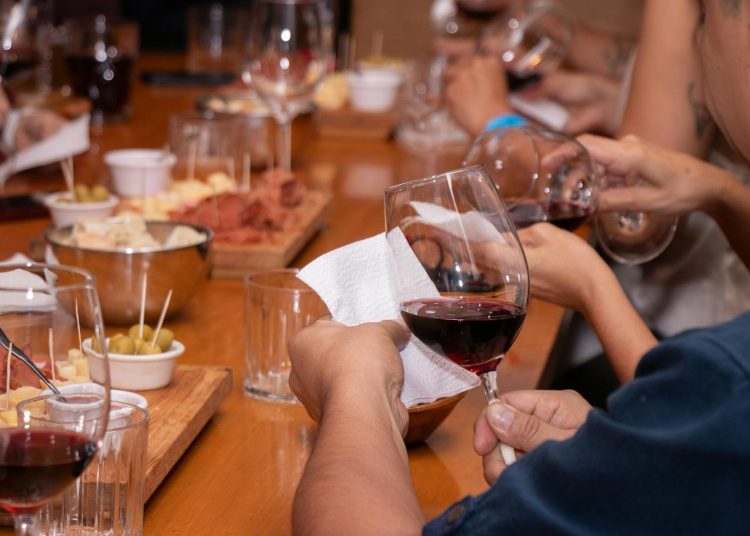Wine is one of the oldest and most cherished beverages in human history, and its journey from the vineyard to your glass is both intricate and fascinating. Whether you’re a seasoned connoisseur or just beginning to explore the world of wine, understanding the process behind it can greatly enhance your appreciation for this beloved drink. From the selection of grapes to the aging process, every step in winemaking contributes to the distinctive flavors and aromas that make each bottle unique. This guide will take you through the journey of wine, explaining the key stages that transform simple grapes into the elegant drink that graces your table.
The Grape Varieties
The foundation of any wine is, of course, the grape. There are thousands of grape varieties used for winemaking, but only a handful are considered the most significant in producing the wines that have become popular worldwide. Each grape variety has its own unique characteristics, contributing distinct flavors, aromas, and textures to the final product.
- Cabernet Sauvignon: Known as the king of red wine grapes, Cabernet Sauvignon is famous for its bold flavors, firm tannins, and aging potential. It often has notes of dark fruits like blackcurrant, as well as hints of spice, tobacco, and leather.
- Chardonnay: The world’s most popular white wine grape, Chardonnay is versatile and can be made in a variety of styles. Depending on the climate and winemaking techniques, Chardonnay can have flavors ranging from crisp green apple to buttery, oaky richness.
- Pinot Noir: This delicate red grape is known for its light body and complex aromas of red berries, earth, and spice. Pinot Noir is notoriously difficult to grow, but when cultivated correctly, it produces some of the most nuanced and elegant wines.
- Riesling: A highly aromatic white grape, Riesling is known for its high acidity and versatility. It can be made into dry, semi-sweet, or sweet wines, often featuring notes of citrus, stone fruits, and floral aromas.
These are just a few examples, but each variety has specific traits that make it suitable for different styles of wine. Understanding the characteristics of different grape varieties can help you identify the types of wine you enjoy most.
The Vineyard and Harvest
The quality of the wine starts in the vineyard. The location, climate, and soil—collectively known as terroir—play an important role in determining the flavor profile of the wine. Each region has its unique climate, which affects how the grapes grow and ripen. Cooler climates often produce wines with higher acidity and more subtle flavors, while warmer climates yield richer, more full-bodied wines.
- Terroir: The concept of terroir is fundamental in understanding wine. Terroir encompasses all the environmental factors that influence the grapevines, including soil composition, climate, topography, and even the amount of sunlight. Winemakers often select specific vineyard sites to harness the unique qualities of their terroir, resulting in wines with distinctive regional characteristics.
- Harvesting: The timing of the harvest is crucial in determining the style of the wine. Grapes harvested early will have higher acidity and lower sugar content, resulting in crisper, more refreshing wines. Conversely, grapes harvested later will have higher sugar levels, which contribute to a fuller body and higher alcohol content. The decision to harvest is based on a careful balance between sugar, acidity, and flavor development. Grapes can be harvested by hand or by machine, with hand-picking often preferred for higher-quality wines to ensure only the best grapes are selected.
The Winemaking Process
After the grapes are harvested, they begin their journey through the winemaking process. This process involves several key steps that can vary depending on the type of wine being produced.
- Crushing and Pressing: The first step in winemaking is crushing the grapes to release their juice. For white wines, the grapes are usually pressed immediately to separate the juice from the skins, which helps maintain the wine’s light color and fresh flavor. For red wines, the juice is left in contact with the skins during fermentation to extract color, tannins, and flavors.
- Fermentation: Fermentation is where the magic happens. During this process, yeast converts the sugars in the grape juice into alcohol and carbon dioxide. For red wines, fermentation occurs with the grape skins, seeds, and sometimes stems, while for white wines, it occurs with just the juice. The fermentation temperature and duration can significantly impact the flavor profile of the wine. Cooler fermentations preserve fruity and floral aromas, while warmer fermentations enhance tannin extraction and depth of flavor.
- Aging: After fermentation, the wine is often aged to allow the flavors to develop and mature. Wines can be aged in stainless steel tanks, concrete vats, or oak barrels, each of which imparts different qualities to the wine. Oak barrels are especially popular for aging red wines and some full-bodied white wines, as they add flavors like vanilla, spice, and toast. The length of aging also affects the wine’s character—some wines are aged for just a few months, while others may age for several years.
Blending and Bottling
Many wines are the product of blending different grape varieties or different vineyard lots. Blending allows winemakers to create a balanced and harmonious wine by combining grapes with different characteristics. For example, Cabernet Sauvignon may be blended with Merlot to soften its tannins and add richness.
Once the wine has reached the desired flavor profile, it is ready to be bottled. Bottling is a critical step that must be done carefully to avoid oxidation and contamination. After bottling, some wines are ready to drink immediately, while others may benefit from further aging in the bottle.
Understanding Wine Styles
There are many different styles of wine, each with its unique qualities. Understanding the basic categories can help you navigate the wide world of wine more confidently.
- Red Wine: Made from dark-skinned grape varieties, red wine gets its color, tannins, and many of its flavors from the grape skins. Red wines can range from light-bodied and fruity, like Pinot Noir, to full-bodied and bold, like Cabernet Sauvignon. The tannins in red wine provide structure and a drying sensation, which is why red wines are often paired with rich, fatty foods.
- White Wine: White wines are typically made from green or yellow-skinned grapes, though they can also be made from red grapes if the skins are removed before fermentation. White wines are known for their crisp acidity and bright flavors, ranging from citrus and green apple in Sauvignon Blanc to buttery and tropical in Chardonnay.
- Rosé Wine: Rosé is made by allowing the grape skins to remain in contact with the juice for a short time, just long enough to give the wine a pink hue. Rosé can be dry or sweet, and it often has flavors of red berries, citrus, and floral notes, making it a refreshing choice for warm weather.
- Sparkling Wine: Sparkling wine, such as Champagne, is characterized by its bubbles, which are created by a second fermentation that traps carbon dioxide in the bottle. Sparkling wines can range from dry to sweet, and they are often enjoyed during celebrations.
- Dessert Wine: Dessert wines, like Port and Sauternes, are sweet wines typically served with dessert or as a dessert themselves. They are made by either stopping fermentation early to retain residual sugar or by using grapes with naturally high sugar content, such as those affected by noble rot or frozen on the vine.
Tasting and Appreciating Wine
Wine tasting is about more than just drinking—it’s about experiencing and understanding the different elements that make each wine unique. When tasting wine, it’s helpful to focus on four main components: appearance, aroma, taste, and finish.
- Appearance: Start by observing the wine in your glass. Tilt the glass and look at the color, which can give you clues about the wine’s age and grape variety. Red wines tend to lighten with age, while white wines deepen in color.
- Aroma: Swirl the wine gently in the glass to release its aromas, then take a deep sniff. The aromas of a wine can be incredibly complex, ranging from fruity and floral to earthy and spicy. The nose of a wine can tell you a lot about its grape variety, aging process, and terroir.
- Taste: Take a small sip and let the wine coat your palate. Pay attention to the flavors, acidity, tannins, and body of the wine. Is it fruity or earthy? Light or full-bodied? The balance between acidity, sweetness, tannins, and alcohol is key to a well-made wine.
- Finish: The finish refers to the lingering taste after you swallow. A long, pleasant finish is often a sign of a high-quality wine. Note the flavors that remain and how they evolve over time.
Food Pairing Basics
Pairing wine with food can elevate both the meal and the wine, creating a harmonious experience that brings out the best in each. While there are no hard and fast rules, there are some general guidelines that can help you get started:
- Red Wine with Red Meat: The tannins in red wine pair well with the richness of red meat. A classic example is Cabernet Sauvignon with a juicy steak, as the tannins cut through the fat and enhance the flavor of the meat.
- White Wine with Fish and Poultry: The acidity in white wine complements the delicate flavors of fish and poultry. For example, a crisp Sauvignon Blanc pairs well with grilled fish or a light chicken dish.
- Sweet Wine with Spicy Food: Sweet wines like Riesling can help balance the heat of spicy dishes, creating a pleasant contrast that enhances the flavors of both.
- Rosé with Salads and Light Fare: The versatility of rosé makes it a great match for salads, light pasta dishes, and Mediterranean cuisine. Its bright acidity and fruitiness complement a wide range of flavors.
Understanding wine is a journey that combines history, geography, and science with sensory experience. By learning about grape varieties, winemaking processes, and tasting techniques, you can deepen your appreciation for wine and enjoy it on a whole new level. Whether you’re savoring a glass of bold red by the fire or toasting with bubbly at a celebration, wine is a drink that brings people together and celebrates the beauty of craftsmanship.













